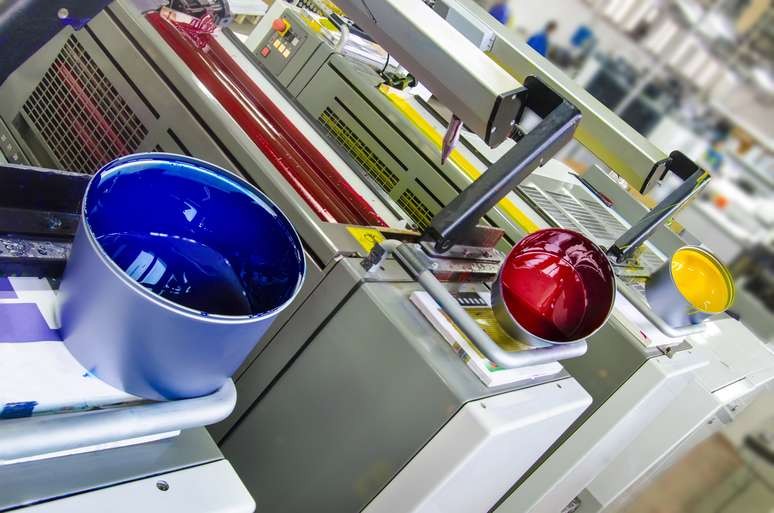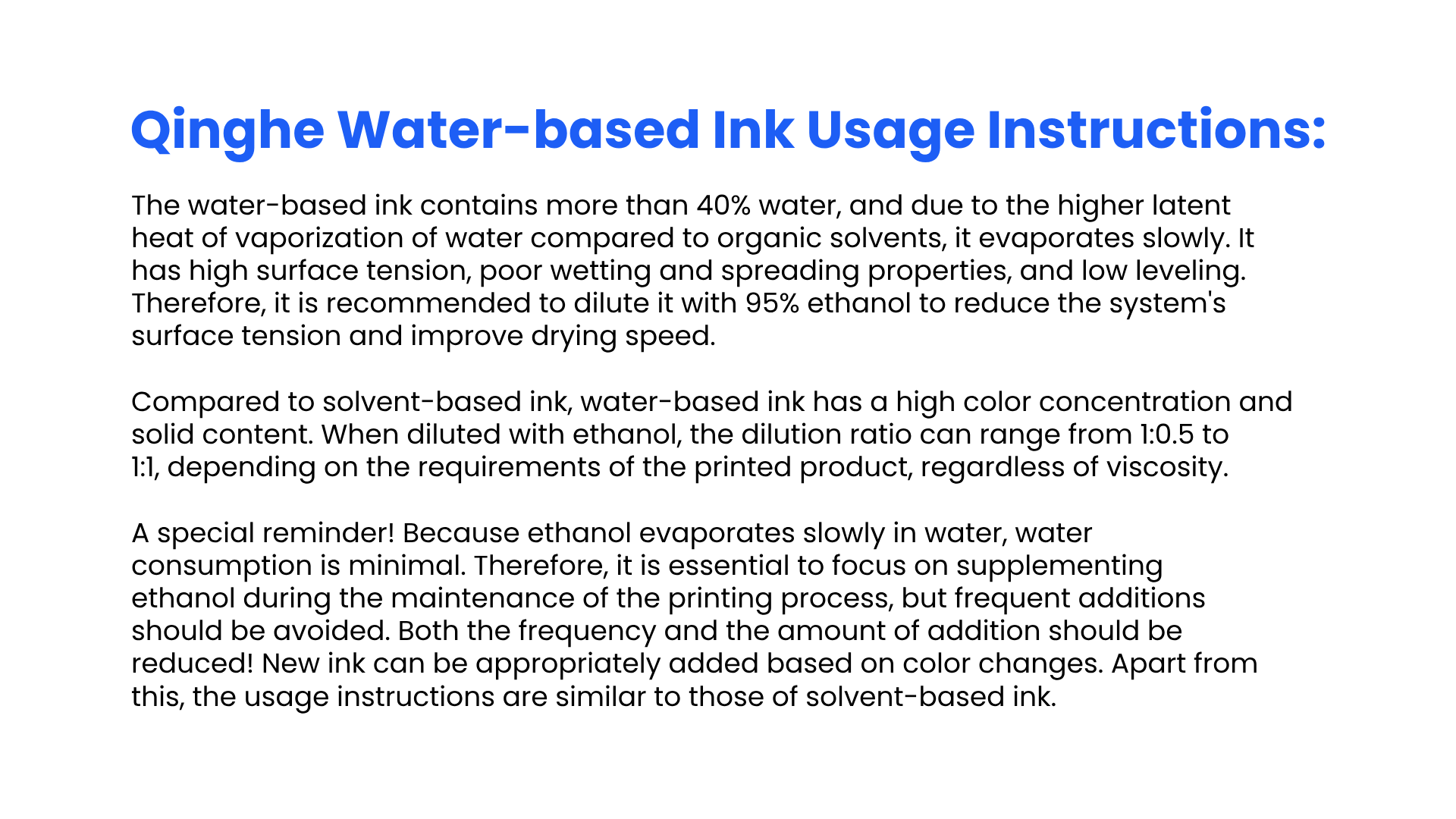Introduction

In printing, ink is the unsung hero that brings words and images to life on paper. Understanding ink composition is key to unlocking its potential and achieving high-quality results. From the chemicals in ink to the vibrant colors of printer ink, a whole world of complexity is hidden within those tiny cartridges.
Understanding Ink Composition
Ink composition is a complex science involving a precise blend of ingredients. To achieve the perfect printing medium, ink manufacturers carefully combine several key components.
- Pigments and dyes: These provide the ink's color.
- Solvents: These control the ink's viscosity and drying time.
- Additives: These enhance properties like flow, adhesion, and overall performance.
By carefully balancing these elements, ink manufacturers create products that deliver exceptional print quality and reliability.
Chemicals in Ink
The chemicals in ink are carefully selected to ensure optimal color reproduction, fast drying times, and long-lasting prints. It's not just about creating pretty colors; it's also about formulating a solution that adheres well to paper, resists fading, and withstands environmental factors.
The chemical composition of ink also plays a crucial role in determining the overall quality of the printed material. By carefully selecting the right combination of chemicals, ink manufacturers can achieve vibrant and accurate color reproduction, ensuring that the final product meets the highest standards. Additionally, fast drying times are essential to prevent smudging and ensure prints are ready for immediate use. The ability of ink to withstand environmental factors such as moisture and sunlight is equally important, as it directly impacts the longevity of the printed material.
Exploring the Colors of Printer Ink
Printer ink comes in a mesmerizing array of colors, from bold primary hues to subtle pastels. The diversity of color printer ink allows for endless creative possibilities, whether printing photographs, documents, or artwork. In addition to the standard cyan, magenta, yellow, and black (CMYK) inks used for full-color printing, specialty inks, such as metallics and fluorescents, can add an extra pop to your prints. These unique ink options open up a whole new world of design possibilities for those looking to make a statement with their printed materials.
What Makes Up Ink?

When it comes to understanding ink composition, it's crucial to examine the various ingredients. From pigments and dyes to solvents and resins, the combination of these components determines the ink's color, viscosity, and drying time. The chemical makeup of ink is a fascinating blend that impacts its performance and application across different printing methods.
Diving into Ink Ingredients
Ink ingredients consist of pigments or dyes that provide color, binders that hold the pigment together, solvents that control viscosity and drying time, and additives for specific properties like gloss or durability. Understanding the role of each ingredient is essential in formulating high-quality ink for various printing needs. The right combination of these components can result in vibrant colors, fast-drying ink, and long-lasting prints.
In addition to the basic ink ingredients, the choice of pigments or dyes can also impact the ink's environmental friendliness. Water-based inks, for example, are more sustainable and eco-friendly than solvent-based inks. By using waterborne polyurethane inks like Qinghe's, printers can reduce their environmental impact without sacrificing quality. This makes it an attractive option for businesses looking to improve their sustainability efforts while still producing high-quality prints.
The Role of Qinghe's Waterborne Polyurethane Inks
Qinghe's waterborne polyurethane inks have revolutionized the industry with their eco-friendly composition and exceptional performance. These inks utilize water as a solvent instead of harsh chemicals, reducing environmental impact without compromising print quality. Their innovative formulation showcases how advancements in ink composition can lead to sustainable solutions without sacrificing results.
Furthermore, Qinghe's waterborne polyurethane inks are environmentally friendly and cost-effective. By using water as a solvent, companies can reduce their spending on hazardous chemicals and waste disposal, significantly saving production costs. This makes the inks attractive for businesses looking to improve their bottom line while reducing their environmental footprint.
The Cost of Ink and Its Components
The cost of ink is influenced by its components, with high-quality pigments and specialized additives contributing to higher production expenses. However, investing in premium ingredients can result in superior print quality and longevity, making it a worthwhile expense for professional printing applications. Understanding the correlation between ink composition and cost is essential for businesses seeking optimal results within budget constraints.
Investing in high-quality ink components may initially seem like a significant expense, but it can save money in the long run. Premium pigments and additives are designed to produce vibrant, long-lasting prints, reducing the need for frequent cartridge replacements. This can lead to cost savings for businesses that rely heavily on printing.
Different Types of Ink

There are various types of ink to choose from, each with its own unique composition and characteristics. One popular type is water-based block printing ink, known for its smooth consistency and vibrant colors. This type of ink typically contains ingredients such as pigments, binders, and water, making it an eco-friendly option for artists and printers.
Water-Based Block Printing Ink
Water-based block printing ink is a versatile choice for artists and printmakers who want to create bold, colorful prints without harsh chemicals. This type of ink often contains natural ingredients safe for the environment, making it a popular choice among eco-conscious creators. With its fast-drying properties and easy cleanup, water-based block printing ink is a practical and environmentally friendly option for all projects.
Water-based block printing ink is a versatile choice for artists and printmakers who want to create bold, colorful prints without harsh chemicals. This type of ink often contains natural ingredients safe for the environment, making it a popular choice among eco-conscious creators. With its fast-drying properties and easy cleanup, water-based block printing ink is a practical and environmentally friendly option for all projects.
Exploring Water Ink
Water ink has become a popular choice among artists and environmentally-conscious consumers. This eco-friendly alternative to traditional oil-based inks offers a vibrant palette and a clean conscience.
Water ink boasts several advantages:
- Environmentally friendly: Made with natural ingredients and water, it minimizes harm to the planet.
- Vibrant colors: Offers a wide range of stunning hues for expressive artwork.
- Safe and non-toxic: Protects the artist and the environment from harmful chemicals.
- Versatile: Suitable for various artistic applications, including calligraphy, painting, and printing.
With its eco-friendliness, vibrant colors, and versatility, water-ink is a compelling choice for artists seeking to create beautiful and sustainable artwork.
Amsterdam Acrylic Ink: A Closer Look
Amsterdam acrylic ink is a high-quality product known for its intense color payoff and lightfastness. With a wide range of colors available, this acrylic-based ink contains carefully selected pigments that offer excellent adhesion to various surfaces. Whether used for fine art applications or mixed media projects, Amsterdam acrylic ink provides artists with a reliable medium that delivers rich colors and exceptional durability.
Amsterdam acrylic ink is known for its vibrant colors, durability, and versatility. This high-quality product can be used on a variety of surfaces, including paper, canvas, wood, and more, making it a go-to choice for artists looking to experiment with different mediums. Whether you're a professional artist or just starting out, Amsterdam acrylic ink offers the flexibility to explore and create without limitations.
The Science of Ink

When it comes to ink composition, the ingredients play a crucial role in determining its performance. The chemical makeup of ink can affect its drying time, color vibrancy, and adhesion to different surfaces. Understanding the intricate balance of ink ingredients is essential for achieving the desired printing results.
How Ink Composition Affects Performance
The ink composition directly impacts its performance in various printing applications. For instance, the chemical in ink can determine whether the ink is suitable for use on paper, fabric, or plastic. Additionally, specific chemicals can influence smudging, fading, and overall print quality.
In addition to suitability for different surfaces, the composition also plays a crucial role in determining the ink's drying time. Certain chemicals can accelerate or delay drying, impacting production efficiency and overall turnaround time. For instance, quick-drying inks are essential for high-speed printing applications, while slower-drying inks may be preferred for projects that require more precise color matching and blending. Therefore, understanding the ink composition is vital for achieving optimal printing results.
Matte Ink: Resistant to Wear, Heat, and Water
Matte ink stands out for its durability and wear, heat, and water resistance. This type of ink is formulated with special ingredients that create a non-reflective finish while providing exceptional protection against external elements. Matte ink is a popular choice for applications where long-lasting prints are required.
Matte ink's resistance to wear, heat, and water makes it ideal for outdoor signage, vehicle wraps, and other applications exposed to harsh environmental conditions. Its ability to maintain its non-reflective finish even in direct sunlight makes it a popular option for businesses looking to create long-lasting, high-quality prints that will remain vibrant and eye-catching for years. Additionally, the exceptional protection provided by matte ink ensures that prints will not fade or deteriorate due to exposure to the elements, making it a cost-effective choice for businesses seeking durable marketing materials.
Unveiling the Secrets of Ink Chemistry
Ink chemistry is a fascinating field that hinges on the precise blend of various components. Understanding these ingredients and their interactions is crucial for optimizing ink performance.
To fully grasp ink chemistry, consider the following key elements:
- Ink composition: Explore the different types of pigments, dyes, solvents, and additives used in ink formulations.
- Ink properties: Understand how these components influence color, viscosity, drying time, and adhesion.
- Ink selection: Learn to choose the right ink for specific printing applications based on its chemical makeup.
You can make informed decisions to enhance your printing projects by delving into ink chemistry.
Conclusion

Regarding printing quality, the impact of ink composition cannot be overstated. The ingredients in ink play a crucial role in determining the vibrancy and longevity of printed materials. Understanding the chemical makeup of ink is essential for achieving the desired results. Additionally, it's important to consider the compatibility of ink with different printing surfaces, as certain inks may perform better on specific types of paper or fabric. This can significantly impact the final appearance and durability of the printed material.
Choosing the right ink for your needs involves considering factors such as color intensity, drying time, and durability. Water-based block printing ink offers a versatile option for artists and crafters, while Amsterdam acrylic ink provides rich pigmentation for professional artwork. The cost of ink should also be factored into your decision-making process.
The evolution of ink has seen remarkable advancements in recent years, with water-based inks gaining popularity due to their eco-friendly nature and improved performance. As technology continues to progress, we can expect further innovations in ink composition that will shape the future of printing.
As technology progresses, the demand for inkjet printers and high-quality prints is also increasing. This has led to a surge in research and development efforts to create inks that are eco-friendly and produce vibrant, long-lasting colors. With the rise of digital printing and the need for fast-drying inks, manufacturers are constantly exploring new formulations and additives to meet these evolving needs. As a result, we can anticipate exciting breakthroughs in ink composition that will revolutionize how we print and consume printed materials.

